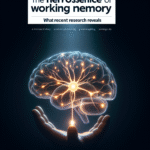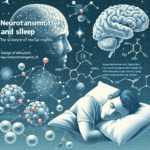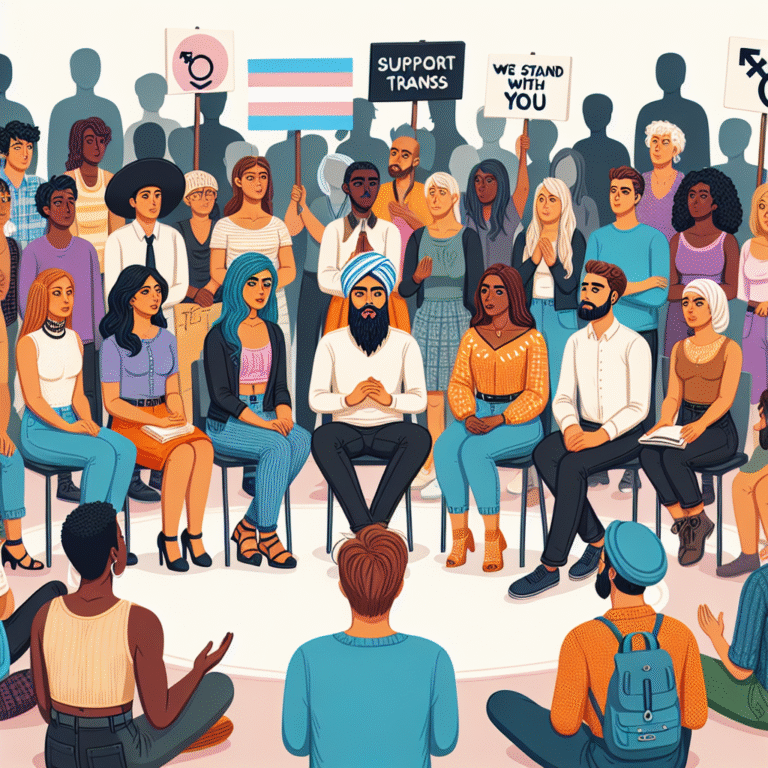
Female Psychology 101: The Essential Hidden Factors that Spark Attraction
 Introduction
Introduction
Attraction is a complex dance of emotions, perceptions, and unspoken cues—far from just physical appearances. Understanding female psychology provides an unparalleled edge in grasping what sparks attraction in women. This knowledge isn’t just for romantic interests; it’s applicable in friendships, professional settings, and social dynamics as well.
What if you could unlock the secrets behind one of life’s most intriguing puzzles? This article, “Female Psychology 101: The Hidden Factors that Spark Attraction,” delves into the underlying principles of attraction, enriching your relationships and interactions. Together, we will explore essential dynamics that shape attraction, backed by case studies that bring these concepts to life.
The Framework of Attraction
The Role of Emotional Connection
When delving into female psychology, one cannot ignore the paramount role that emotional connection plays. Women often seek deeper emotional bonds before considering a romantic relationship.
Case Study: The Emotional Bonding Experiment
In a well-known psychological experiment, Dutton and Aron (1974) studied how physiological arousal influences attraction. They had men cross either a high, shaky bridge or a stable, low bridge. The men who crossed the unstable bridge were more likely to contact a female researcher afterward, suggesting that heightened arousal increased their attraction.
Analysis: This study exemplifies how emotional and physical stimuli can intertwine, suggesting that creating an emotional connection enhances attraction while shared experiences can intensify feelings.
The Power of Vulnerability
Another often-overlooked aspect of female attraction psychology is the power of vulnerability. Openness fosters trust and connection, essential for attraction.
Case Study: The Vulnerability Factor
In a social experiment where pairs of strangers engaged in progressively intimate personal questions, participants often reported feelings of closeness and connection. This intimacy built a foundation for attraction to grow.
Analysis: The findings indicate that showing vulnerability can elicit feelings of attraction in women, demonstrating that authenticity and transparency are critical in relationship-building.
Confidence and Self-Perception
Confidence is another significant factor that women find attractive. Women often associate confidence with strength and dependability, qualities that are instinctively attractive.
Case Study: The Confidence Perception Study
Researchers found that women rated photos of men exhibiting confidence over those displaying uncertainty. In the study, confident individuals were perceived as more successful, attractive, and capable.
Analysis: Confidence attracts attention; it is an inherent trait that fosters immediate attraction, making it one of the critical components in understanding female psychology.
Social Proof and Status
The Importance of Social Context
Female attraction can also depend heavily on social contexts and perceived social proof. Women often look for cues from other people’s reactions to gauge a man’s desirability.
Case Study: The Bystander Effect in Social Settings
In a study published in the Journal of Experimental Social Psychology, researchers observed that men who were more socially engaged and well-liked by their peers were often viewed as more attractive by women.
Analysis: This phenomenon illustrates the concept of social proof, wherein an individual’s status can significantly affect perceived attractiveness. Women are drawn to men who appear validated by their social circles, indicating desirable qualities.
The Halo Effect
The halo effect posits that people tend to assume that someone’s positive characteristics extend beyond their obvious traits. If a man is physically attractive, women are more likely to perceive him as possessing other desirable qualities.
Case Study: Attractiveness and Personality Perception
A meta-analysis published in the Journal of Personality and Social Psychology found that people often ascribe positive personality traits to physically attractive individuals without any evidence to support that assumption.
Analysis: This effect underscores the importance of physical appearance in the initial stages of attraction, though it’s essential to note this requires more than just looks for lasting attraction.
Communication and Connection
The Role of Verbal and Nonverbal Cues
Effective communication plays a vital role in fostering attraction, encompassing both verbal and nonverbal signals.
Case Study: The Power of Body Language Study
Research from UCLA highlighted that body language accounts for over 50% of communication effectiveness. Participants who exhibited open body language and maintained eye contact were rated as more attractive.
Analysis: Understanding female psychology involves recognising that both spoken words and body language send critical messages. Thus, being aware of nonverbal interactions can immensely influence attraction.
Humor as an Attraction Factor
Humour is a universally appealing trait that can spark attraction. It showcases creativity, intelligence, and a positive outlook.
Case Study: The Humor and Attraction Experiment
Participants watched videos of men displaying different humour styles in a social experiment. Women rated men who used playful humour as more attractive than those who did not.
Analysis: Humour can serve as an effective icebreaker that fosters connection, indicating that women appreciate a man’s ability to make them laugh.
The Influence of the Environment
The Setting and Context of Engagement
The environment where interactions take place can also significantly influence attraction. Certain settings can encourage intimacy and emotional connection, leading to heightened attraction.
Case Study: The Café Connection
A study conducted in a café setting showed that couples who met in a relaxed atmosphere reported stronger connections compared to those who met in more formal environments.
Analysis: The ambiance can evoke emotions and facilitate conversation. Thus, selecting the right setting can amplify attractions and cement relationships.
The Role of Timing
Timing is an often-overlooked factor in attraction. The stage of life, emotional readiness, and external pressures can all influence the nature and depth of attraction experienced.
Case Study: Timing and Relationship Readiness
Research indicates that individuals who are more emotionally aware and open to relationships during specific life phases tend to experience stronger connections.
Analysis: Being aware of timing and emotional readiness can guide individuals in cultivating healthy attractions.
Conclusion
Understanding female psychology and the hidden factors that spark attraction is a powerful tool for enhancing relationships. From emotional connections to social context and vulnerability, these elements are essential to nurturing genuine affinity.
Explore these insights to enrich your interactions and foster deeper bonds with those you encounter. Open up to vulnerability, embody confidence, communicate effectively, and curate the right environments—these actions will lead to more meaningful connections in your life.
FAQs
1. What are the most important factors in female attraction?
The key factors in female attraction go beyond physical appearance and delve into emotional, social, and psychological aspects. Here’s a closer look:
- Emotional Connection: Women often prioritise emotional intimacy. Feeling understood, valued, and connected on a deeper level can be more compelling than surface-level traits. Active listening and genuine interest in her thoughts and feelings build this connection.
- Confidence: Confidence is magnetic. Women are drawn to individuals who are self-assured without arrogance. It shows that you’re comfortable in your own skin, capable of taking initiative, and able to handle challenges.
- Vulnerability: While confidence is essential, the ability to show vulnerability demonstrates emotional depth and authenticity. Sharing your fears, aspirations, and personal struggles signals trust and creates space for mutual bonding.
- Social Proof: Social validation plays a significant role. If your peers positively regard you or have qualities admired in social settings (e.g., leadership, kindness, or charisma), this can increase your perceived attractiveness.
- Effective Communication: Clear, engaging, and empathetic communication is vital. This includes both verbal (having meaningful conversations) and non-verbal cues (maintaining eye contact, appropriate gestures) that express interest and respect.
2. How can I make myself more attractive to women?
Becoming more attractive is about cultivating personal qualities that enhance your appeal holistically.
- Build Confidence:
- Work on self-esteem by celebrating small achievements and overcoming personal challenges.
- Maintain good posture, make eye contact, and speak with clarity—these non-verbal cues exude confidence.
- Foster emotional connections:
- Take the time to understand her feelings, values, and dreams.
- Show genuine interest in her world, and don’t be afraid to open up about yours.
- Demonstrate Vulnerability:
- Share personal stories or challenges when appropriate, revealing your authentic self.
- Avoid presenting a facade of perfection; instead, let her see you as someone relatable.
- Enhance Your Social Skills:
- Work on being approachable and engaging in group settings.
- Treat everyone with respect and kindness, as women often notice how you interact with others.
- Maintain Personal Growth:
- Pursue hobbies, goals, and interests that make you passionate and fulfilled.
- Being driven and multidimensional is attractive and shows that you have a life of your own.
3. Is physical appearance important for attraction?
Physical appearance does play a role in initial attraction, but it’s not the sole determinant of long-term desirability. Here’s a detailed view:
- First Impressions: Physical traits often create the initial spark, as they are the first thing noticeable. This includes grooming, style, and basic hygiene.
- Beyond Looks: As the relationship progresses, traits like kindness, emotional intelligence, and compatibility often surpass the importance of physical looks.
- Personal Care Matters: While you don’t need to look like a model, presenting yourself well by dressing appropriately, maintaining fitness, and grooming regularly can significantly impact your attractiveness.
4. Can humour enhance attraction?
Absolutely. Humour is a powerful tool in building attraction. Here’s why:
- Creates a Fun Atmosphere: Humour lightens the mood and helps people feel at ease around you.
- Demonstrates intelligence and creativity: Wit often reflects sharp thinking, which many women find appealing.
- Builds Emotional Bonds: Shared laughter creates positive associations, making the experience of being with you enjoyable.
- Signals Confidence: Being comfortable enough to joke and laugh, even about yourself, displays confidence and humility.
5. How does social proof influence attraction?
Social proof refers to how others perceive you, and it significantly impacts attraction.
- Peer Approval: Women often notice how others react to you. If you’re well-regarded in your social circle, it signals that you possess desirable qualities.
- Reputation Matters: Being known for positive traits like kindness, integrity, or leadership enhances your desirability.
- Signals Compatibility: A man who’s respected or liked by others is often seen as someone who’s capable of forming meaningful connections, an attractive trait for long-term relationships.
To leverage social proof:
- Surround yourself with quality friends who bring out your best traits.
- Engage in activities where your talents or leadership abilities are visible to others.
By focusing on these areas, you can cultivate an authentic attractiveness that resonates with women on multiple levels.
Remember, the journey of understanding female psychology is continuous and ever-evolving. Keep exploring and adapting, and you will find that the hidden factors that spark attraction can lead to enriching and fulfilling relationships.
 Introduction
Introduction












